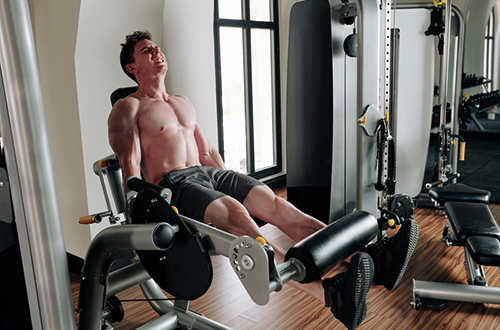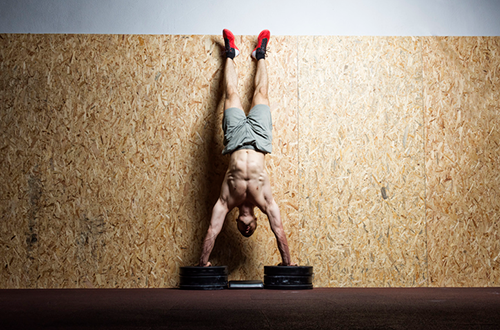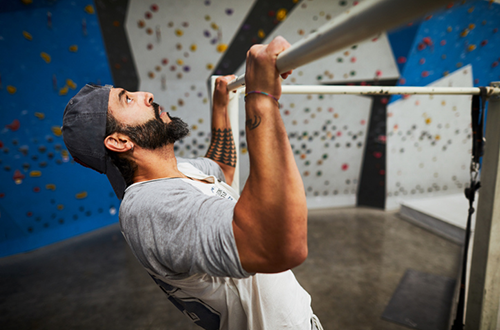
Which Exercises Are the Most and Least Functional?
By Andrew Heffernan
Ask five different fitness professionals what functional exercises are, and you'll get at least five different answers. Why the confusion? First up, the name. By definition, anything your body can do properly can be considered a function, from deadlifting to moonwalking to rotating your pinky toes. If you can do it, it's (technically) a function.
Another reason: With perhaps the exception of rotating your pinky toe, the premise that some movements have real-life carryover, while others are strictly for show, is faulty. Learn why many movements can be considered functional exercises and how to determine which ones you should add to your routine.
Help your muscles rebuild and recover faster with LADDER Whey or Plant Protein.
.
Nonfunctional Exercises Can Still Be Functional

Some functional training advocates like to argue that a squat is functional because it looks and feels like standing up from a chair, whereas a leg extension is nonfunctional because it doesn't have the look or feel of day-to-day movement.
However, research suggests that, depending on the population, nonfunctional exercises can have plenty of real-life carryover. An oldie-but-goodie 1990 study, for example, found that a few weeks of performing leg extensions improved leg strength and walking speed in trainees of advanced age.
"Function" depends on context
So the degree of functionality (or applicability) of an exercise depends on the abilities and goals of the person who's doing it. If a group of healthy high-school softball players did the same leg-extension workouts as the older adults in the study above, they probably wouldn't get much out of it. And if those older adults followed a program designed for the softball players, they'd likely get injured.
What's considered functional exercises for one person might be ineffectual or disastrous for another. That would depend on — among other things — the person's training history, goals, age, and injury status.
Keeping that in mind, you can still categorize any exercise based on its place on a functional continuum. On the low end are seated, single-joint movements requiring very little stabilization and control. On the high end are exercises that require high levels of coordination, balance, and full-body control.
.
What Makes an Exercise Functional?

The factors determine an exercise's place on the functional continuum are:
1. You mobilize many joints at once
All else being equal, a movement in which you articulate or stabilize fewer joints is less functional than one in which you move or stabilize more joints. That makes a dumbbell lateral raise a less functional exercise than, say, an overhead press, and an overhead press less functional than a lunge-to-overhead press, for example.
2. You have to stabilize yourself
If your position — or the apparatus you're using — provides a lot of external stability, it's less functional than one in which you have to create that stability yourself. That's why any move you perform seated or lying down, or on a machine, is less functional than a move you perform standing.
3. They are closed-chain movements
An open-chain movement, like a dumbbell bench press, involves moving an implement away from (or toward) your center of gravity. A closed-chain movement, like a push-up, involves moving your center of gravity toward or away from the ground or another stable object (like a bar). Generally, closed-chain movements are considered more functional exercises than open-chain ones.
4. They let you move in all three planes of movement
The more functional a movement is, the more freedom of movement it allows. Leg extensions allow one joint to move in a single, front-to-back plane of movement. Around-the-world lunges — where you step first to the side, then back, then forward — involve three planes of movement.
5. They use a single limb
Single-sided exercises are more functional because the dominant limb can't compensate for the non-dominant one. For example, a single-leg movement, like a single-leg deadlift, is generally more functional than a double-leg version of the same movement. Working with one arm, using one implement, is generally more functional than using two arms.
.
Examples of Functional Exercises
Bearing these factors in mind, here is a list of movements, categorized by muscle group, arranged from least to most functional.
The first exercises in each list are appropriate for beginners, older people, or people coming back from injuries. Later exercises are more challenging and appropriate for athletes and other very fit people. Advanced exercisers might also choose less functional options because they are appropriate to their aesthetic or sport-specific goals.
Shoulders

- Dumbbell Lateral Raises
- Seated Dumbbell Overhead Press
- Standing Overhead Dumbbell Press
- Standing Single-Arm Overhead Dumbbell Press
- "Down Dog" Push-ups
- Handstand Push-ups
Chest

- Machine Fly
- Dumbbell Fly
- Machine Bench Press
- Barbell Bench Press
- Dumbbell Bench Press
- Push-Up
Lower Body (Quadriceps)

- Leg Extensions
- Single-Leg Leg Extension
- Leg Press
- Squat
- Split Squat
- Bulgarian Split Squat
Lower Body (Hamstrings and Glutes)

- Leg Curl
- Single-Leg Leg Curl
- Hip Thrust
- Straight-Leg Deadlift
- Deadlift
- Single-Leg Deadlift
- Single-Leg Single-Arm Deadlift
Back

- Machine Row
- Machine One-Arm Row
- Two-Arm Dumbbell Row
- One-Arm Dumbbell Row
- Renegade Row
- Inverted Row On TRX
- Single-Arm Inverted Row
- Pull-Up (or Chin-Up)



